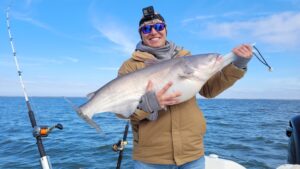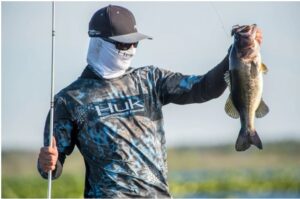
Catching Fish
Fishing is not just a pastime; it’s an age-old skill that connects individuals with nature and offers a sense of satisfaction and accomplishment. Whether you’re a seasoned angler or a beginner eager to learn the ropes, mastering the art of catching fish involves a combination of knowledge, patience, and technique. In this comprehensive guide, we’ll take you through the essential steps to increase your chances of a successful fishing experience.
Understanding the Basics
1. Know Your Target Fish:
Different species of fish have distinct habits, preferences, and habitats. Research the type of fish you’re targeting to understand their behavior, feeding patterns, and the best times to catch them.
2. Selecting the Right Gear:
Choosing the appropriate fishing gear is crucial. Consider the type of fish, the fishing location, and the fishing method. Basic equipment includes a fishing rod, reel, fishing line, hooks, and bait.
3. Learning Fishing Knots:
Mastering a few essential fishing knots is vital. Practice tying knots like the Palomar knot and improved clinch knot to ensure your equipment stays secure during the catch.
Locating the Fish
1. Understand Water Conditions:
Fish are affected by water temperature, clarity, and depth. Warmer water tends to increase fish activity, while some species prefer clearer or murkier water. Pay attention to these factors when selecting your fishing spot.
2. Use Polarized Sunglasses:
Polarized sunglasses reduce glare and help you see beneath the water’s surface. This can be invaluable for spotting fish and understanding their movements.
3. Research Local Fishing Spots:
Local knowledge is a valuable asset. Connect with fellow anglers, visit bait shops, and explore online forums to discover the best fishing spots in your area.
Bait and Lures
1. Live Bait:
Using live bait can be highly effective. Common choices include worms, minnows, and crickets. Match the bait to the type of fish you’re targeting.
2. Artificial Lures:
Artificial lures mimic the movement of prey and can attract fish. Experiment with various types, such as crankbaits, soft plastics, and spinners, to see what works best for your target species.
3. Consider the Season:
Different seasons may require different bait and lures. In colder months, fish may be less active, so slow-moving lures might be more effective.
Patience and Technique
1. Mastering the Cast:
Practice your casting technique to ensure accuracy and distance. Knowing how to cast properly is fundamental to reaching your desired fishing spot.
2. Practice Catch and Release:
If you’re not fishing for sustenance, consider catch and release. Handle fish with care, using wet hands to avoid removing their protective slime layer.
3. Be Patient:
Fishing requires patience. Stay calm and wait for the fish to bite. Sometimes, a slow and steady approach yields the best results.
Safety and Conservation
1. Adhere to Fishing Regulations:
Familiarize yourself with local fishing regulations. Respect catch limits, size restrictions, and seasonal closures to promote sustainable fishing practices.
2. Safety First:
Wear appropriate clothing and safety gear. If fishing from a boat, ensure everyone wears a life jacket. Be aware of your surroundings and weather conditions.
3. Leave No Trace:
Practice Leave No Trace principles by cleaning up after yourself. Dispose of trash properly and avoid leaving any negative impact on the environment.
Catching Fish
Catching fish is an art that combines skill, knowledge, and respect for nature. Whether you’re angling for relaxation, sport, or sustenance, honing your fishing skills can lead to a rewarding and enjoyable experience. Remember, every fishing trip is a chance to learn and improve, so embrace the process and savor the moments spent by the water’s edge. Happy fishing!
Related keywords:-








